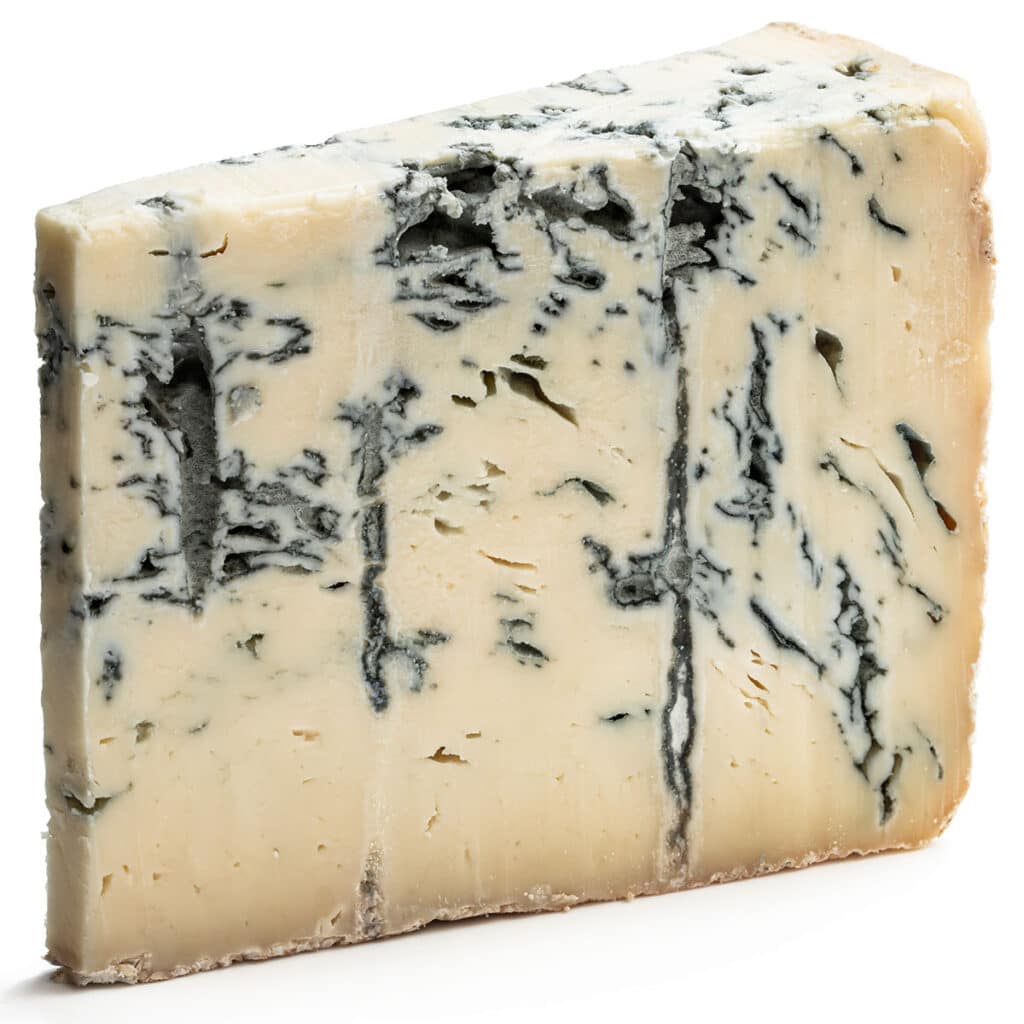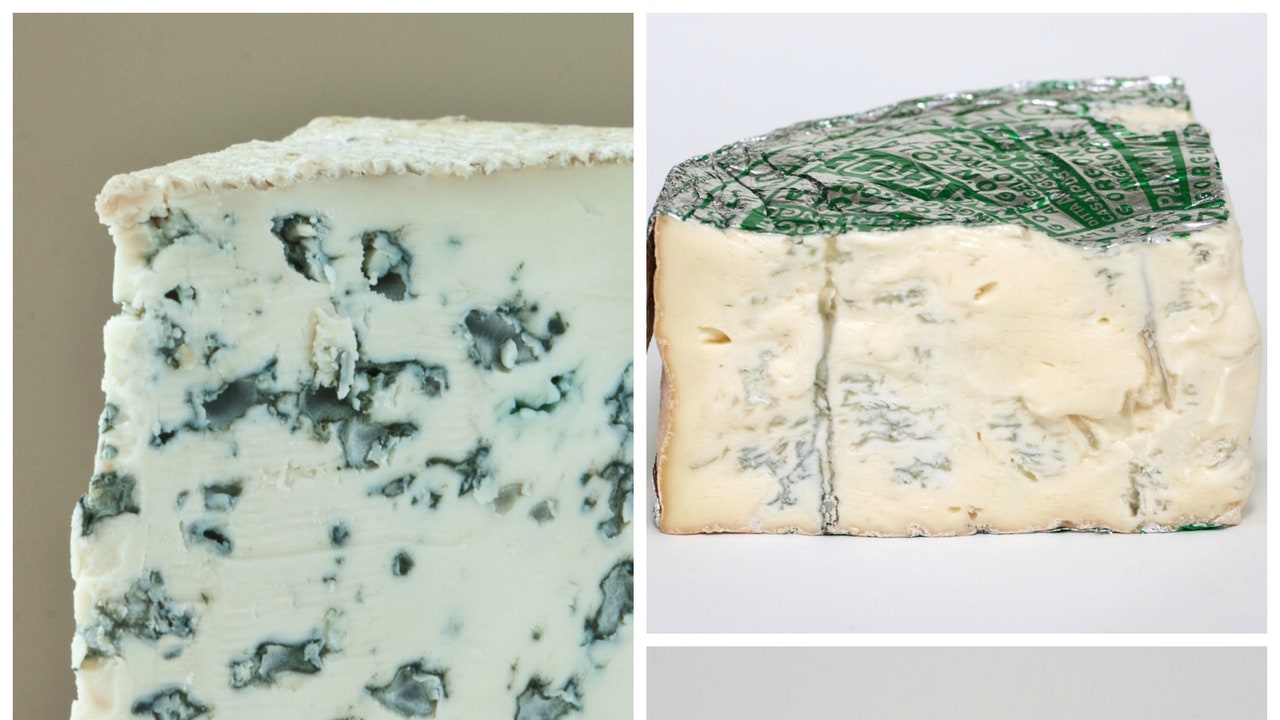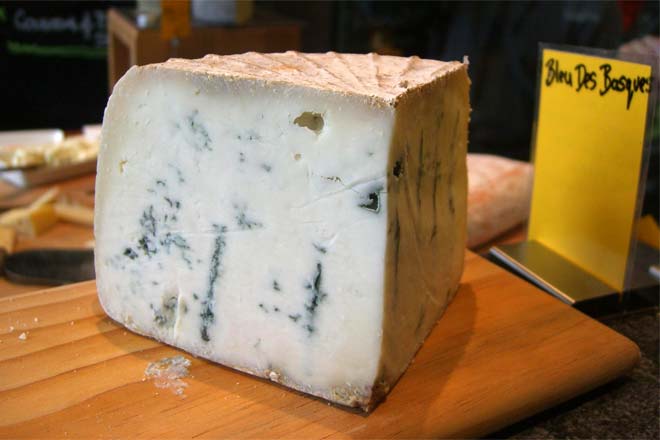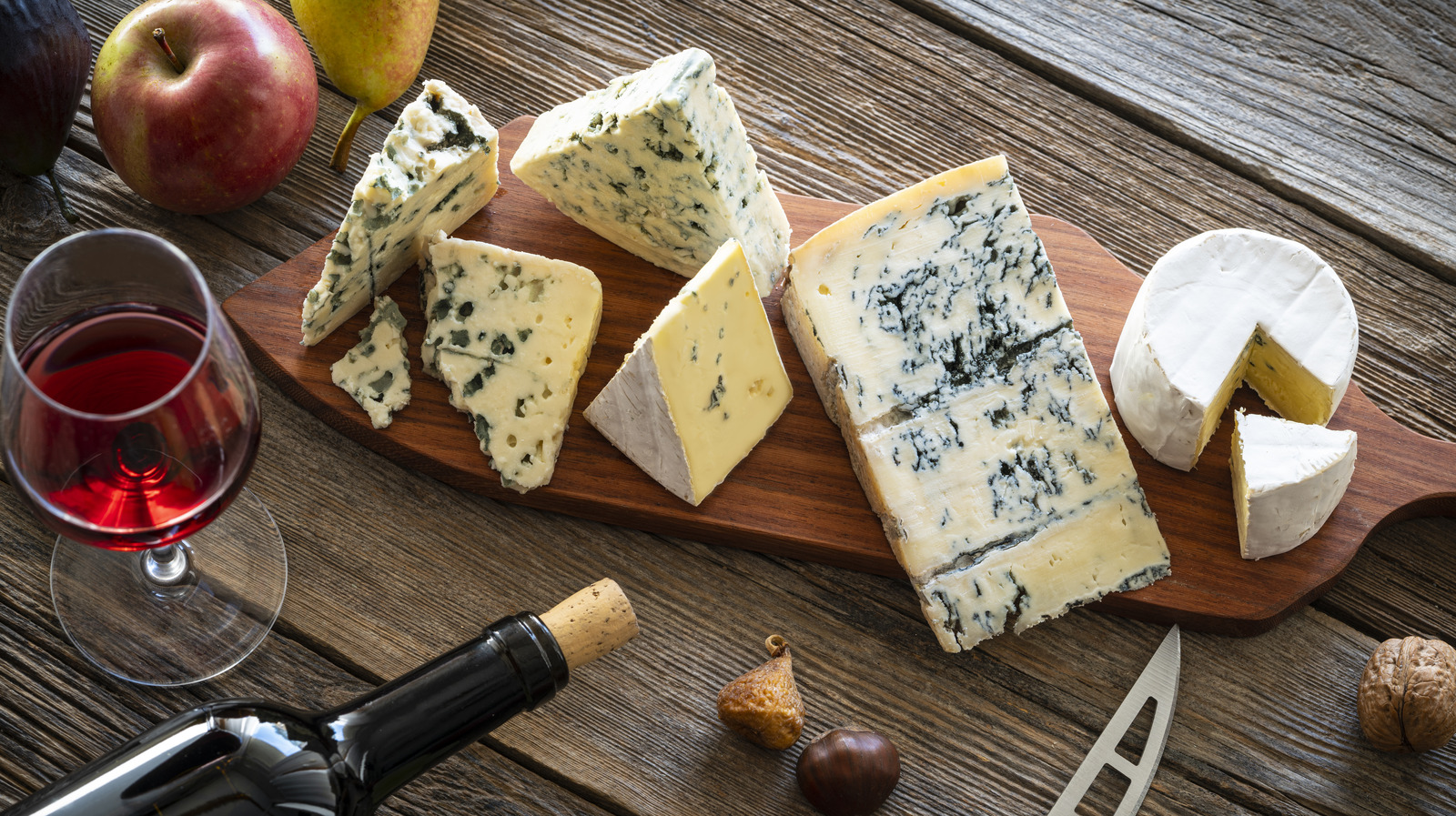Introduction

Blue cheese and Gorgonzola cheese are both popular aged cheeses known for their distinct flavors and textures. While they may seem similar, there are notable differences that set them apart. In this article, we will explore the origins, flavors, and textures of Gorgonzola cheese and blue cheese. We will also compare the production process and nutritional value of these cheeses. Whether you prefer the creamy and milder taste of Gorgonzola or the sharp and salty profile of blue cheese, understanding these differences will help you make an informed choice in your culinary adventures.
What Is Gorgonzola Cheese?
Gorgonzola cheese is a type of blue cheese that originated in Italy. It is made from cow’s milk and is known for its creamy texture and tangy flavor. The cheese is aged for three to four months, allowing the blue mold to develop and give it its distinctive blue-green marbling. Gorgonzola cheese is characterized by its earthy and slightly spicy taste, making it a favorite among cheese enthusiasts. It is often crumbled over salads, melted into sauces, or enjoyed on its own with a glass of red wine.
What Is Blue Cheese?
Blue cheese is a type of cheese that is known for its distinct blue or blue-green veins. It is made from cow’s, sheep’s, or goat’s milk and is aged in a controlled environment to allow the growth of specific mold cultures. The mold gives blue cheese its characteristic flavor, which is sharp and salty. The cheese has a crumbly texture and a strong smell. Blue cheese can be enjoyed on its own or used in various dishes and recipes. It pairs well with fruits, nuts, and wines such as port or Sauternes.
Gorgonzola Cheese

Gorgonzola cheese is a well-known Italian blue cheese that has been enjoyed for centuries. It originated in the Gorgonzola region of northern Italy and has since become popular worldwide. This cheese has a creamy and crumbly texture, with a distinct blue-green marbling. Its flavor is rich, tangy, and slightly salty, making it a favorite among cheese lovers. Gorgonzola cheese is often used in a variety of dishes, such as salads, pastas, and pizzas, where its bold flavor can take center stage. It pairs well with fruits, honey, and crusty bread, making it a versatile and delicious addition to any culinary creation.
Gorgonzola Cheese: Origin And History
Gorgonzola cheese has a rich history that dates back centuries. It originated in the Gorgonzola region of northern Italy, where it was traditionally made with unskimmed cow’s or goat’s milk. The cheese gets its name from the small town of Gorgonzola, known for its production of this unique and flavorful cheese. It was first produced in the 9th century and has since become a staple in Italian cuisine. Gorgonzola cheese gained popularity in the 12th century when it was served at banquets for the Italian nobility. Today, it is loved and enjoyed by cheese connoisseurs around the world.
Gorgonzola Cheese: Flavor And Texture
Gorgonzola cheese is renowned for its distinct flavor and luxurious creamy texture. The flavor profile of Gorgonzola is robust, with a perfect balance between tangy and salty notes. It has a rich and creamy texture that becomes crumbly and dense as it ages. The cheese is often described as earthy and slightly pungent, with a delicate hint of sweetness. Its unique blue veins contribute to its complex taste and add a creamy, melting quality to the texture. Gorgonzola cheese is truly a delight for cheese lovers looking for bold and indulgent flavors.
Blue Cheese

Blue cheese is a specific type of aged cheese that falls under the category of blue-veined cheeses. It is characterized by the blue veins of mold that run through it, which are produced by the introduction of Penicillium cultures during the cheese-making process. Blue cheese has a strong and distinct flavor profile, often described as sharp, tangy, and salty. It also has a crumbly and creamy texture, which varies depending on the specific type and age of the cheese. Blue cheese is a favorite among cheese enthusiasts for its unique taste and texture.
Blue Cheese: Origin And History
Blue cheese has a rich history that can be traced back to various regions in Europe. Its origins can be found in countries such as France, Italy, and England. The exact origin of blue cheese is debated among cheese enthusiasts, but it is believed to have been discovered accidentally when mold spores from the surrounding caves contaminated the cheese. This led to the development of the distinctive blue veins that give blue cheese its unique flavor and appearance. Over time, different variations of blue cheese have been developed, each with its own distinct characteristics and production methods.
Blue Cheese: Flavor And Texture
Blue cheese is known for its bold and distinctive flavor. It has a sharp, tangy taste that can range from mild to intense, depending on the aging process and type of blue cheese. The flavor is often described as strong, pungent, and slightly salty.
In terms of texture, blue cheese typically has a creamy and crumbly consistency. It is characterized by the presence of blue-green veins throughout the cheese, which are actually the result of mold spores. The veins give blue cheese a unique appearance and contribute to its creamy yet slightly granular texture.
Overall, blue cheese offers a bold flavor and a creamy, crumbly texture that adds depth and complexity to dishes and cheese boards.
Aged Cheese Duel: Gorgonzola Vs Blue Cheese

In the aged cheese duel between Gorgonzola and Blue Cheese, both cheeses showcase their unique qualities. Gorgonzola, with its creamier texture and milder flavor, appeals to those seeking a more delicate taste. On the other hand, Blue Cheese offers a bold and tangy flavor that can range from mild to intense, along with its characteristic blue-green veins. Both cheeses undergo a similar aging process, allowing the flavors to develop and intensify over time. Whether you prefer the creaminess of Gorgonzola or the boldness of Blue Cheese, both options provide a delightful addition to any cheese board or recipe.
Aged Cheese Production Process Comparison
Aged cheese production involves similar processes for Gorgonzola and Blue Cheese. Both cheeses are made from cow’s milk and undergo a process of curdling, draining, and shaping before being left to mature. During the aging process, the cheeses are carefully monitored for humidity and temperature to allow the development of complex flavors and textures. Blue Cheese is further aged with the introduction of unique mold cultures, which create the characteristic blue-green veins. Gorgonzola, on the other hand, is inoculated with specific bacteria that contribute to its creamy and milder flavor. Despite their differences, both cheeses undergo a meticulous aging process that results in their distinct taste and appearance.
Aged Cheese Nutritional Value And Health Benefits
Aged cheese, such as Gorgonzola and Blue Cheese, offers not only exceptional flavor but also a range of nutritional benefits. These cheeses are a good source of protein, calcium, and phosphorus, which are essential for bone health. They also provide vitamins, such as vitamin B12, which is necessary for nerve and brain function, and vitamin A, which supports healthy vision. Additionally, aged cheese contains probiotics that promote gut health and enhance digestion. However, it’s important to consume aged cheese in moderation due to its high sodium and saturated fat content.
Gorgonzola Cheese Wins!

When it comes to the aged cheese duel between Gorgonzola and Blue Cheese, Gorgonzola takes the crown. With its rich and creamy texture, Gorgonzola cheese offers a distinct taste and aroma that sets it apart from other blue cheeses. Its unique flavor profile makes it a perfect choice for pairing with various foods and wines, enhancing the overall dining experience. Whether you’re looking to indulge in a gourmet recipe or simply enjoy a slice on a cracker, Gorgonzola cheese is sure to delight your taste buds. Choose Gorgonzola and savor the victory of its exceptional flavor.
Gorgonzola Cheese: Pairing With Food And Wine
Gorgonzola cheese offers a wide range of pairing options with various foods and wines. Its rich and creamy texture pairs well with fruits such as pears and figs, creating a delightful combination of sweet and savory flavors. When it comes to wine, Gorgonzola goes wonderfully with red wines like Cabernet Sauvignon or Syrah, as the bold flavors of the cheese complement the robustness of these wines. For a lighter option, try pairing Gorgonzola with a crisp white wine like Sauvignon Blanc. No matter the occasion, Gorgonzola cheese is sure to elevate your culinary experience.
Gorgonzola Cheese: Famous Recipes
Gorgonzola cheese is a versatile ingredient that can elevate the flavor of various dishes. One famous recipe that showcases the deliciousness of this cheese is Gorgonzola and Pear Salad. This refreshing salad combines the creamy Gorgonzola with the sweetness of ripe pears, crunchy walnuts, and tangy vinaigrette. Another popular recipe is Gorgonzola-stuffed Burgers, where the cheese is stuffed inside a juicy beef patty, creating a burst of flavor with every bite. Lastly, Gorgonzola Pasta is a favorite among pasta lovers, featuring a creamy sauce made with Gorgonzola, garlic, and cream. These famous recipes highlight the exquisite taste and versatility of Gorgonzola cheese.
Conclusion

In conclusion, the debate between Gorgonzola cheese and Blue cheese has highlighted the distinct qualities and flavors of each. While both cheeses share similarities in their production process and health benefits, Gorgonzola cheese stands out with its creamy texture and milder flavor. It pairs well with a variety of foods and wines, making it a versatile choice for culinary enthusiasts. Whether you prefer the boldness of Blue cheese or the smoothness of Gorgonzola, both options offer a delightful taste experience. Ultimately, the preference for Gorgonzola or Blue cheese comes down to personal taste and culinary preferences. So, enjoy exploring and savoring these aged cheeses in your favorite dishes.
Preference And Taste: Gorgonzola Or Blue Cheese?
When it comes to the preference and taste of Gorgonzola versus Blue Cheese, it ultimately comes down to personal preference. Some people prefer the milder and creamier flavor of Gorgonzola, while others enjoy the stronger and more pungent taste of Blue Cheese. Gorgonzola’s smooth and velvety texture is often favored by those who enjoy a subtler cheese experience. On the other hand, Blue Cheese lovers appreciate the bold and tangy flavors that add a unique kick to their culinary creations. Whether you choose Gorgonzola or Blue Cheese, both options offer a delicious and distinct taste that can elevate any dish.
Final Thoughts And Recommendations
In the age-old debate of Gorgonzola cheese vs Blue cheese, it all boils down to personal preference. Both cheeses offer distinct flavors and textures that can elevate any dish. Whether you prefer the milder and creamier taste of Gorgonzola or the bolder and tangier flavor of Blue cheese, you can’t go wrong with either choice.
Some recommendations for Gorgonzola cheese lovers include pairing it with pears, honey, or walnuts for a delicious combination. Meanwhile, Blue cheese enthusiasts can enjoy it crumbled over salads or melted into a creamy sauce.
In conclusion, experiment and discover your own favorite ways to enjoy these exquisite aged cheeses.
Frequently Asked Questions About Gorgonzola Cheese vs Blue Cheese
1. What is the difference between Gorgonzola cheese and Blue cheese?
Gorgonzola cheese and Blue cheese are both types of cheeses with a distinct blue mold veining, but they differ in their origin and production process. Gorgonzola cheese is from Italy, specifically the regions of Lombardy and Piedmont, while Blue cheese can come from various countries, including France, England, and the United States.
2. How are they made?
Gorgonzola cheese is mostly made from cow’s milk, with the addition of mold cultures (Penicillium glaucum or Penicillium roqueforti). The cheese is pierced to encourage the growth of the distinctive blue-green veins. On the other hand, Blue cheese is made from cow’s, sheep’s, or goat’s milk. The mold cultures are added during the cheese-making process, and the cheese is also pierced to allow the mold to develop.
3. What are the flavor profiles of Gorgonzola and Blue cheese?
Gorgonzola is known for its rich and creamy texture with a savory and slightly salty taste. It has a tangy flavor that can range from mild to intense, depending on the aging period. Blue cheese, on the other hand, has a more robust and pungent flavor, with hints of spice. It can be creamy or crumbly depending on the type and age.
4. Are there differences in texture?
Yes, there are differences in texture between these two cheeses. Gorgonzola has a soft, creamy consistency that becomes denser as it ages. Its texture is often described as smooth and spreadable. Blue cheese, on the other hand, can vary in texture. Some varieties are crumbly, while others are semi-soft or even creamy, depending on the style and age.
5. Can they be used interchangeably in recipes?
Yes, Gorgonzola and Blue cheese can often be used interchangeably in recipes that call for blue-veined cheese. However, it’s important to note that Blue cheese tends to have a stronger flavor, so it may overpower certain dishes. Gorgonzola’s milder taste makes it a versatile choice for salads, pasta dishes, sauces, and even desserts.
6. How should Gorgonzola and Blue cheese be stored?
Both Gorgonzola and Blue cheese should be stored in the refrigerator to maintain freshness. It is recommended to wrap them tightly in wax paper or plastic wrap to prevent them from drying out or absorbing other flavors in the fridge. Keep them separate from other foods with strong aromas, as they can easily pick up odors.
7. Are there any health considerations for consuming Gorgonzola and Blue cheese?
As with any cheese, moderation is key due to their high fat and sodium content. However, both Gorgonzola and Blue cheese offer nutritional benefits such as vitamins, minerals, and protein. It’s worth noting that pregnant women, individuals with compromised immune systems, or those with allergies should exercise caution when consuming any cheese made from unpasteurized milk, including some traditional Gorgonzola varieties.
In summary, Gorgonzola cheese and Blue cheese share similarities with their blue mold veining, but they differ in origin, production process, flavor, and texture. Both cheeses have a special place in various culinary traditions and can add a unique touch to a wide range of dishes.

Kemah Cafe is a family-owned eatery that takes pride in offering a delightful array of Vietnamese, Chinese, and Thai dishes. Located at the heart of the community, Kemah Cafe has been serving up delicious Pho and other authentic Asian cuisine for many years. Founded with a passion for sharing the flavors of the East, Kemah Cafe has become a beloved culinary destination for locals and visitors alike. The warm and welcoming atmosphere of the cafe, combined with the tantalizing aromas of freshly prepared dishes, creates an unforgettable dining experience.